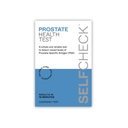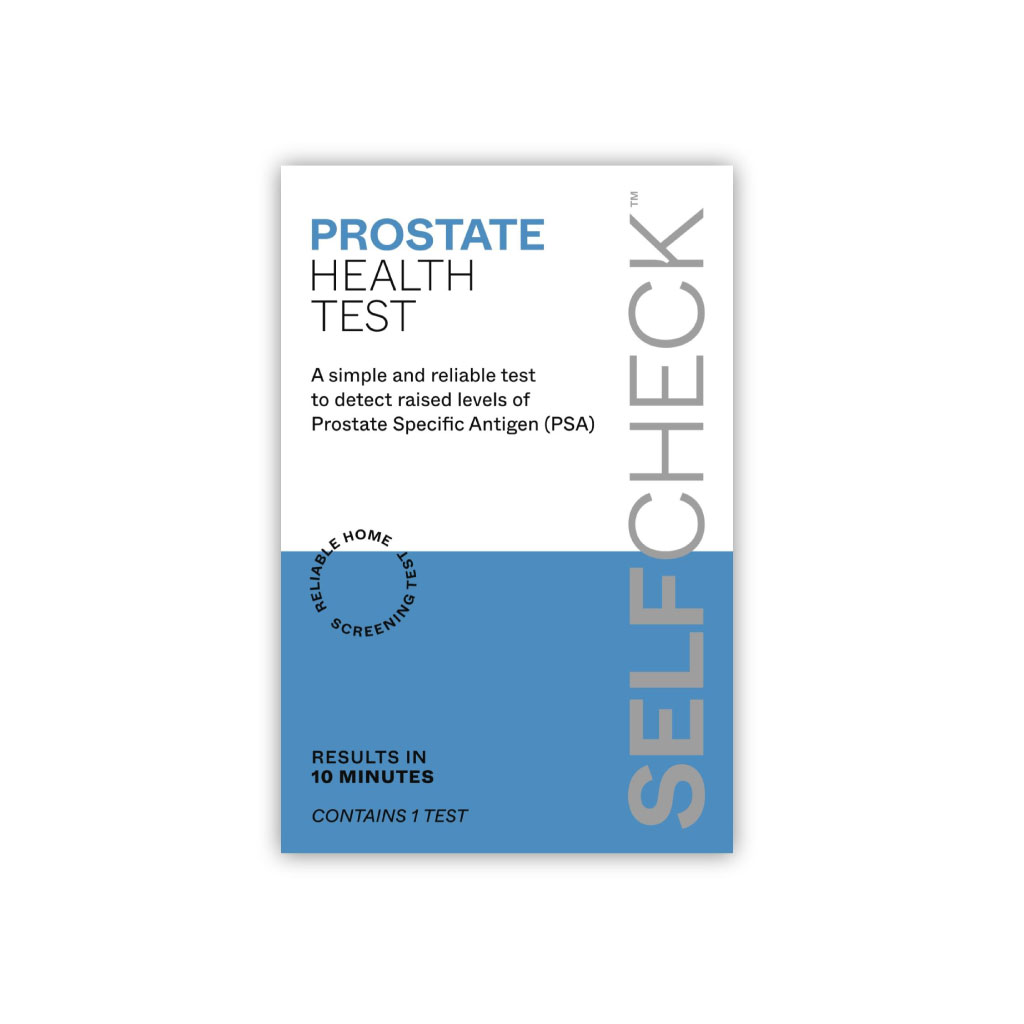Selfcheck Prostate Health Test
The SELFCHECK® Prostate Health Test measures PSA levels in your blood to help monitor prostate health. Elevated PSA levels can indicate prostate issues, such as enlargement or prostatitis, and may also signal prostate cancer. Easy to use at home, but consult your doctor if you have symptoms or concerns.
- Contains 1 Test
- Test at home in private
- Results in 10 minutes
- Finger-prick blood test
- Instructions in plain English
- Assembled in the UK
- Professional customer care
Product Code:
SCPSA1UoM:
UnitThe test requires a finger-prick blood sample and gives a result in 10 minutes.
All the components necessary to perform the test are included in the test kit, together with an easy-to-follow instruction leaflet written in clear English.
Who is the test for?
There is a higher risk of developing prostate cancer in men over 50, those with a family history of prostate cancer, or are of black ethnic origin.
Contraindications
This test can be used at any time of the day, although testing should be delayed following activities such as cycling, ergometry, ejaculation, prostate massage, transrectal ultrasound, cystoscopy or prostate transurethral resection. Further information is provided in the instruction leaflet with your test.
Accuracy
The SELFCHECK® Prostate Health Test shows 97% overall agreement with hospital laboratory tests for the detection of PSA. The test gives a positive result when the PSA level in the blood is 4ng/mL or higher.
Before You Test
It's important that you appreciate the potential benefits and limitations of PSA testing so that you can decide whether or not you want to test.
Benefits
- May provide reassurance if the result is normal
- Can help find early signs of prostate problems, potentially including cancer, allowing for earlier medical advice
- For some men, regular PSA testing may contribute to detecting prostate cancer at an earlier, more treatable stage
Limitations
- PSA tests are not 100% accurate for diagnosing cancer; it can miss some prostate cancers and may give a false sense of security
- A positive result can cause anxiety and lead to further tests which may show no serious problem
- The test cannot distinguish between slow-growing cancers that may never cause harm and aggressive cancers that need immediate treatment
- It may identify a slow-growing cancer that wouldn't have caused issues, potentially leading to unnecessary treatment
Further information on the pros and cons of PSA testing can be found in the UK Government Guidance on PSA testing
How to use your test
- Prepare: Wash your hands
- Collect Sample: Use the sterile lancet provided for a simple finger prick
- Apply Sample: Place the blood sample onto the test device
- Add Solution: Add the buffer solution as directed
- Read Result: Your result will appear in 10 minutes
Full, easy-to-follow instructions are included in every kit.
Understanding Your Result
The self-test takes just over 10 minutes to complete, and will give you a simple yes or no result as to whether the PSA level at the time of testing is in the normal range, or higher.
You may be anxious about testing but remember, a PSA test is just a tool to give you information, not a final diagnosis.
Positive result
If the result is positive, it means that the PSA level in your blood is higher than normal (4ng/mL). There are many reasons why you might have raised levels of PSA and you should speak with your GP to discuss your result. Your doctor will perform a full clinical assessment to understand what this result means for you and determine the next steps, which may include further tests by a hospital laboratory. Please take the instruction leaflet with you to your appointment, as it contains important information for your doctor.
Negative result
If the result is negative it means that the PSA level in your blood is in the normal range (less than 4ng/mL). However, all medical tests can have false negative results. If you have symptoms that concern you, or if you are in a high-risk group for prostate cancer, then you should still speak with your doctor.


